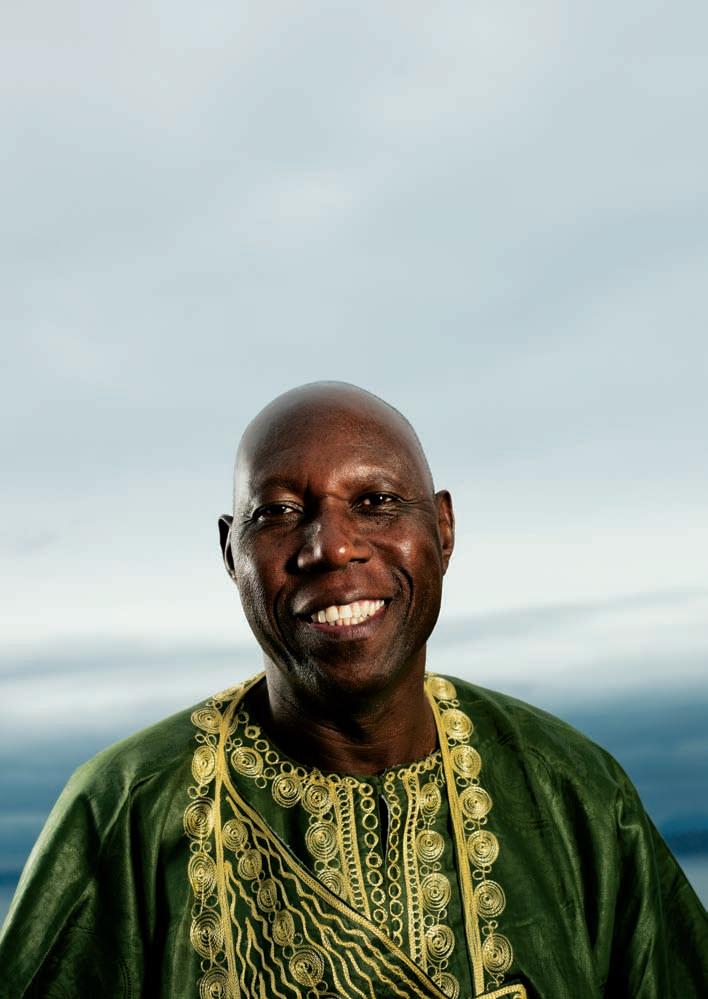
4 minute read
Tech Navigate the world of GPS technology.


Advertisement
On the Map
IN JUST OVER A DECADE, GPS HAS GONE FROM LUXURY TO UBIQUITOUS TECHNOLOGY. SO WHERE’S IT ALL HEADED?
BY ALYSSA GIACOBBE // ILLUSTRATION BY QUICKHONEY IN THE BEGINNING, GPS devices were celebrated for making the world easier to navigate and eliminating the dangerous habit of driving with a 16-inch atlas. But as technology has evolved—these days parents use GPS shoes to keep track of their kids—automotive navigation systems have been forced to evolve with it, moving beyond the simple task of pointing drivers in the right direction and on to more complex things like computing traffi c information, surfi ng the internet and speaking with funny voices (TomTom off ers voice options from Darth Vader and Yoda to Homer Simpson, among others). But the new trend in navigation involves another gadget entirely: your cell phone.
According to a recent report by NPD Group’s Mobile Phone Track, four out of fi ve cell phones sold in the fourth quarter of 2009 came with GPS capability. But there’s more to guiding drivers than maps—navigation devices must provide turn-by-turn directions, too. For a while, in-car GPS systems were the only ones
Advertising feature
Power Up, It’s a Long Flight ight
You have the slickest laptop on the planet. Unfortunately, since the battery just died it’s now the biggest paperweight on the plane. Wouldn’t it be nice to have enough battery life to last the length of this flight and the performance to do what you enjoy doing on your laptop? Now you can. An NVIDIA® graphics processor with Optimus™ technology in your laptop provides both great battery life and great performance so you can work (and play) the way you want to. With Optimus™ technology, your laptop knows to shut down the GPU for simple things, like email and word processing and turn the GPU back on for more demanding activities like watching HD movies or playing games. You get performance when you need it, longer battery life when you don’t. It’s that simple. e planet. st died n ve h of o what w you can.
Look for NVIDIA® Optimus™ powered laptops like the Toshiba Satellite® M645 series.
tech
able to do that. Then Google introduced free turn-by-turn technology on its popular Android devices last year, and now free turn-by-turn apps for the iPhone are popping up left and right. “The market for incar GPS units is nearly saturated,” claims John Biggs, editor of gadget blog CrunchGear. But in-car GPS manufacturers aren’t hitting the brakes just yet. Quite the opposite,
TomTom offers voice options from Darth Vader and Yoda to actually—they’re introducing smart Homer Simpson, among others. new innovations that will take GPS to the next level. Companies such as Navigon and Garmin have introduced connected systems that pick up traffi c and weather patterns via radio signal or “crowd sourcing,” a process by which drivers contribute reports about traffi c and weather conditions that are then relayed to everyone else on the road, providing a smoother ride for all. Connected GPS units also allow users to browse the internet and search for deals like cheap gas. Meanwhile, according to Tim Flight, the editor of GPSReview.net, other innovative third-party applications for the GPS—which will allow drivers to fi nd and book hotel rooms, say, or automatically text friends an ETA— are just around the corner.
SEARCH PARTY American cities with the most GPS-guided trips in 2009
3. Chicago
1. Los Angeles 2. Dallas
4. Houston 5. Atlanta
ALYSSA GIACOBBE would do anything Yoda tells her.
A NON-SURGICAL TECHNIQUE TO FIGHT AGAINST ARTHRITIS AND SPORTS INJURIES

Located at 9573 Harding Avenue, Miami Beach, Florida, The Center For Regenerative Medicine includes a team of professionals that are dedicated to improve your quality of life, paving the way to enhance the science of non-surgical orthopedic medicine. World champions, sports legends, professional and amateur athletes, dancers, and people with just plain pain and arthritis go to The Center For Regenerative Medicine for non-surgical orthopedic care. Using the facility to improve their condition, thousands of successful cases have been treated over the past nine years. THE CENTER FOR REGENERATIVE MEDICINE
The Knee Diaries: SJ is a 60-year-old male with bone on bone osteoarthritis of the left knee. An X-ray showed arthritis of the knee (X-ray on the left). Patient started receiving treatments at The Center For Regenerative Medicine. Today he is feeling better (X-ray on the right).
This is how it works: The physician introduces Cell Therapy into damaged, arthritic cells by means of a precise injection. This process is followed by infrared laser as well as several other modalities including Collateral Artery Flow Exercises (C.A.F.E.), in order to accelerate the process. Depending on tissue damage, severity of the condition and the size of the joint that needs to be injected, people usually need a series of 1 to 6 treatments to improve. There is usually no down time, and people can go back to their usual activities or work immediately. The treatments can help most musculoskeletal problems such as low back pain, neck pain, knee pain, shoulder pain, whiplash, sciatica, tendinitis, sprain, strains, torn ligaments and cartilage damage.










